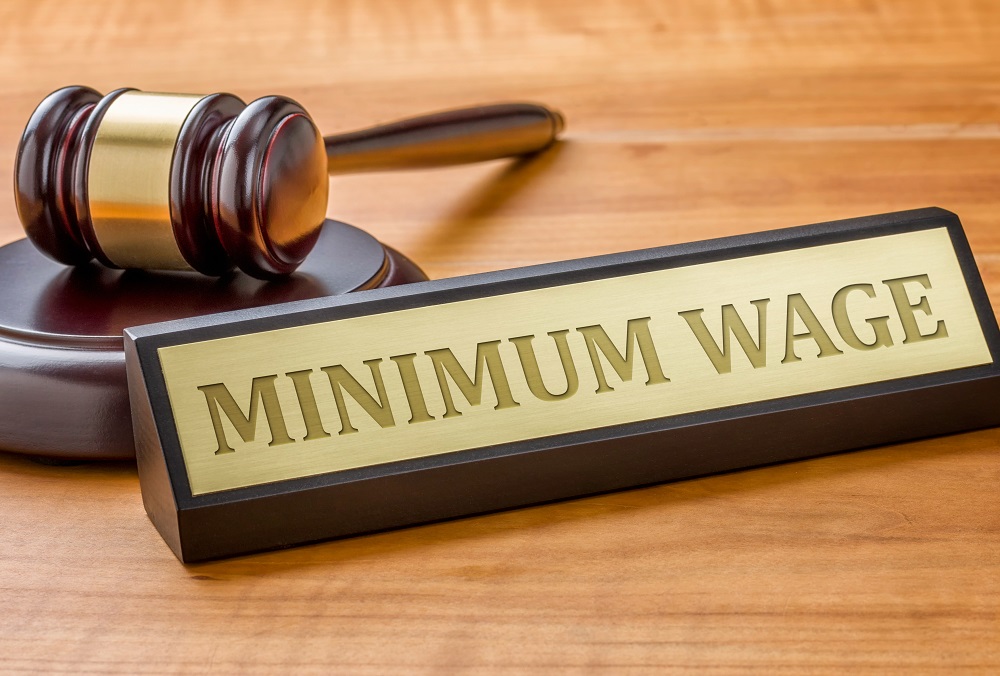In 1949, the California state government passed the Equal Pay Act. The intention of this law was to ensure that women were paid as much as their male colleagues for the same work. It was not a perfect solution and required adjustments over the years which resulted in the Fair Pay Act being passed in 2015. The Fair Pay Act was enacted in 2016 as a way to get rid of loopholes in the original law that had been exploited over the years.
What is the Equal Pay Act?
California Labor Code section 1197.5, also known as The Equal Pay Act, is an attempt to reduce the instances of discrimination based wage gaps and ensure that all employees receive equal pay for equal work. Though originally created to address sex discrimination, the law has been amended to also protect against racial discrimination as well. The law governs both public and private employers and while the language used is all encompassing, it is intended to remedy a longstanding issue of woman and people of color being incredibly underpaid.
The History of the California Equal Pay Act
At the turn of the twentieth century, it was not unheard of for women to have paying jobs outside of the home. However, those jobs were often female dominated, undervalued, and got away with paying very little. When two world wars reduced the male workforce, women began taking on more male dominated professions. However, despite doing the exact same work that men had been doing, they were being paid far less. When the original Equal Pay Act was enacted in 1949, it stated:
“No employer shall pay any individual in the employer’s employ at wage rates less than the rates paid to employees of the opposite sex in the same establishment for equal work on jobs the performance of which requires equal skill, effort, and responsibility, and which are performed under similar working conditions, except where the payment is made pursuant to a seniority system, a merit system, a system which measures earnings by quantity or quality of production, or a differential based on any bona fide factor other than sex.”
Unfortunately, the wording of the original law allowed for employers to take advantage of loopholes to create their own exceptions. Over time, the language of the law was changed to the point that it now all but mirrors the United States Equal Pay Act of 1963.
Why is the Equal Pay Act Important?
In approximately 97% of occupations throughout California, men are paid more than women. Surveys have shown that the wage gap between men and women costs female workers over $78 billion every year in California. It is estimated that in a career spanning 40 years, women lose out on approximately $400 thousand by being underpaid. In 2014, it was discovered that among full time workers, women only made 84 cents for every dollar made by their male coworkers. Studies have also shown that the wage gap also overlaps with racial discrimination and that women of color are paid the least overall.
How the Equal Pay Act Evolved into the Fair Pay Act
In January of 2016, the California Fair Pay act was enacted to modify and update the language of the Equal Pay Act to make it harder for employers to take advantage of loopholes. The use of the wording “equal work” gave too much room for employers to simply give their female employees different job titles as an excuse to pay them less than male employees for the same work. The phrasing was changed to “substantially similar work” to ensure that jobs requiring “equal skill, effort, and responsibility, and which are performed under similar working conditions” were truly given equal compensation.
What Were the Most Significant Changes Made to the Equal Pay Act?
Modifications made to the Equal Pay Act over the years include:
- Changing the phrase “equal work” to “substantially similar work”
- Removing the phrase “in the same establishment”
- Imposing stricter conditions on what constitutes a “bona fide factor other than sex”
- Regulating justified pay differences to ensure they are reasonable and fair
- Prohibiting employers from preventing their employees from discussing wages
- Prohibiting employers from retaliating against employees for seeking fair wages
- Mandating that employers keep employment records for at least three years
What Constitutes “Substantially Similar Work?”
When determining if employees perform substantially similar work, the factors that are taken into consideration are:
- Skill – The ability, knowledge, and experience needed to do the job
- Effort – The amount of mental or physical work needed to do the job
- Responsibility – The level of duty or accountability that comes with the job
- Working Conditions – The environment in which the job is done
Not only do employees with different job titles often perform substantially similar work, some may have the same job title, but their work involves different levels of effort and responsibility or is performed under different working conditions. A coffee shop could have two employees who are Managers; but one works in the morning during the busiest hours and oversees multiple employees at once, while the other works in the evening when there is almost no business and oversees one employee at a time. Employers should have clear definitions of the components of each job including the functions and essential duties of the job and how much time is spent on each one. Details should be included such as:
Skill:
- Training
- Proficiency
- Efficiency
- Creativity
- Experience
Effort:
- Physical
- Mental
- Time spent
- Complexity
- Multitasking
Responsibility:
- Accountability
- Supervision
- Management
- Importance
- Risk
Conditions:
- Time of Day
- Other People
- Hazards
- Distractions
- Environment
What is an Equal Pay Analysis?
When jobs are determined to consist of substantially similar work, they must have an equal pay rate. An equal pay analysis is a system that measures earnings to uncover any differences in pay and determine if they are justified or need to be adjusted. An equal pay analysis is performed as follows:
- Categorize the jobs into groups of substantially similar work
- Perform an adverse impact analysis on each group to uncover any sex or gender pay disparities, including the amount and frequency of raises and tenure.
- A regression analysis may be needed to examine compensation decisions in relation to protected classes.
- Analyze any pay disparities together to uncover any reasonable explanations not related to protected classes.
- Analyze any remaining unexplained disparities on their own for any extenuating circumstances.
- Make all necessary adjustments to any remaining unequal pay rates.
“Same Establishment” Limitation Eliminated
One way in which employers took advantage of loopholes in the original wording of the Equal Pay Act was by paying different wages to employees at different locations. The Fair Pay Act removed the phrase “in the same establishment” to further reduce the opportunities for wage disparities. Not only do employers have to ensure that all of their employees are paid fairly in comparison to each other, but also in comparison to employees of other companies as well. If a job is truly fairly compensated based on the work performed, then the pay rate should be equal to jobs performed under the same conditions that require the same skill, effort, and responsibility regardless of job title or employer.
Record Keeping Requirements
Prior to 2016, employers were required to keep all employment records pertaining to wages for at least two years. The Fair Pay Act increased that time frame to three years. This provides even more data that can be used to analyze pay rates and identify disparities. A longer time frame can mean a larger number of employees as well as a clearer view of any trends and patterns.
Anti Retaliation Protections to Ensure Transparency
One way for employees to know if they are being paid fairly is by knowing how much their colleagues are being paid. Employees have the right to discuss their wages with each other. Company policies forbidding employees from discussing wages are not legal. Employers are also prohibited from taking adverse employment action against employees as retaliation for disclosing or discussing wages.
Anti Secrecy Provision Implementation
The 2016 Fair Pay Act added an anti-secrecy provision to the Equal Pay Act to protect employees who help their coworkers exercise and enforce their rights. Employers do not have to tell their employees how much other workers are being paid, but employees do have a right to disclose and discuss this information amongst themselves. Employees trying to determine if they are being paid fairly can also access public records of pay scales for different jobs. If they belong to a union, the contract may include that information as well.
Have There Been Further Changes Made to the California Fair Pay Act?
For three years following 2016, additional modifications were made to the Equal Pay Act.
2017 – The law was expanded to protect employees from wage disparities based on race or ethnicity. A restriction was also added specifying that prior salary was not a valid justification for pay discrepancies.
2018 – The law was applied to public employers as well. Labor Code section 432.3 was enacted to prevent employers from investigating the salary history of potential employees and requiring them to provide potential employees with pay scale information when asked.
2019 – Clarifying amendments made to Labor Code section 432.3 were enacted.
The purpose of Labor Code section 432.3 was to make it harder for employers to take advantage of employees who were underpaid by their previous employer or may not be aware of how much they should be paid. Employers are permitted to ask an applicant what kind of pay rate they are looking for, but they cannot ask how much they made at their previous job. If the applicant does divulge this information, it still cannot be used by the employer when determining their wages. The other side of this is that if a prospective employee requests to see the pay scale for the position they are applying for, the employer must provide that information.
California Government Code section 12999 requires private employers with at least 100 employees to submit an annual detailed report to the California Civil Rights Department on the second Wednesday of May outlining their pay data for the previous year.
What are the Few Exemptions to the California Equal Pay Act?
If an employee can prove that their employer pays one sex or race more than another, the employer must prove that their actions can be justified by one or more of the four different ways that pay disparities can be excused that are outlined in the Equal Pay Act:
- Pay rates are based on how long the employee has worked for the employer
- Pay rates are based on a merit system determined by performance evaluations
- Pay rates are based on quantity of product or service output
- Pay rates are based on a bona fide factor such as level of experience
What Can You Do If You Are Experiencing Wage Discrimination?
Employers should have policies in place against inequality and discrimination. The first step to take if you are experiencing wage discrimination is to find those policies for your company and follow the procedure outlined there. These policies are generally posted in a breakroom or in an employee handbook and should include the contact information for the people who enforce those policies. It is often best to speak with your manager or human resources department. If you are part of a union, you should speak with your union rep as well.
Document Unequal Pay
When trying to prove anything, it is best to have clear hard evidence. Keep personal copies of all documents and correspondence such as:
- Employment Contracts
- Pay Stubs
- Salary Records
- Performance Evaluations
- Emails
- Text Messages
- Voicemails
If conversations regarding wages or discrimination occur over company email or messaging systems, forward copies of those conversations to your personal email so you do not lose access to them.
File a Claim or Complaint
Violations of the Equal Pay Act can be reported to the California Department of Labor known as the Division of Labor Standards Enforcement. It is free to file a complaint and the DLSE will investigate the claims. A separate claim can be made to the Wage Claim Adjudication Unit of the DLSE by filing a DLSE-1 form. Complaints to the DLSE must be made within two years of the last instance of discrimination. In some cases, this time limit may be extended to three years if the employer made the violation willfully.
Violations of Title VII of the Civil Rights Act or the Fair Employment and Housing Act can be reported to the California Civil Rights Department or the federal Equal Employment Opportunity Commission. It is free to file a complaint with the CRD or the EEOC and they will investigate the claims. Complaints to the CRD must be made within three years of the last instance of discrimination. Complaints made to the EEOC must be submitted within 300 days.
Some counties and cities have their own specific laws against discrimination. In these instances, violations can be reported to local governing authorities. These agencies may have their own time limits for filing complaints, so it is important to act quickly.
Where to File an Unequal Pay Complaint
Information on filing a wage complaint with the DLSE can be found at:
- https://www.dir.ca.gov/dlse/Equal_Pay_Act_Instruction_Guide.pdf
- https://www.dir.ca.gov/dlse/HowToFileWageClaim.htm.
Information on filing a wage complaint with the CRD can be found at:
- https://calcivilrights.ca.gov/complaintprocess/
- Or you can call their office to make an appointment at 800-884-1684, or 800-700-2320 for TTY
Information on filing a wage complaint with the EEOC can be found at:
- https://www.eeoc.gov/how-file-charge-employment-discrimination
- Or you can call their office to make an appointment at 1-800-669-4000, or 1-800-669-6820 for TTY, or 1-844-234-5122 for ASL video call
- You can also find an EEOC office location near you at https://www.eeoc.gov/field-office to file in person
You can search for local anti-discrimination law enforcement in your area as well. Information regarding the Los Angeles Civil + Human Rights and Equity Department (LA Civil Rights) and submitting a discrimination complaint can be found at:
- https://civilandhumanrights.lacity.gov/
- https://civilandhumanrights.lacity.gov/discrimination-enforcement
Damages and Penalties for Equal Pay Act Violations
When an employer violates the Equal Pay Act, the employee may be able to recover:
- The wages they should have earned
- Interest on the lost wages
- The value as liquidated damages
- Attorney’s fees and court costs
As of 2004, the California Private Attorneys General Act gives employees the opportunity to file an additional suit for civil penalties not only for themselves, but for other employees.
In some cases, employers who are found to have acted willfully may have to pay punitive damages and could even face criminal charges.
Statute of Limitations for Equal Pay Act Claims
In order to make a claim under the California Equal Pay Act, the claim must be filed within two years of the most recent violation. This means the most recent paycheck containing unequal pay. That deadline can be extended to three years if the violation is considered willful. Employees can file Equal Pay Act claims with any of the following:
- State of California
- Labor Commissioner
- Department of Industrial Relations
- Civil court as a lawsuit
If the claim is also part of an overall claim for discrimination, the claim must be filed with the California Civil Rights Department as it falls under their jurisdiction.
If an employer retaliates against their employee for filing an Equal Pay Act claim, the employee must file a claim with the Labor Commissioner within six months of the retaliation or file a civil suit within one year. If the employee chooses to file a lawsuit for retaliation, they do not need to file a claim with the Labor Commissioner first.
Contact Mesriani Law Group if You Are Experiencing Wage Discrimination
For decades, laws have been passed to bridge the wage gap and ensure fair pay for everyone. Employees in the state of California have a legal right to be free of discrimination and inequality in the workplace. Employers who violate those rights should be held accountable. An employment lawyer can help you get the justice and compensation you deserve. Our attorneys are experienced, hardworking, and dedicated to our clients. If you believe that your employer is underpaying you due to your sex, race, or ethnicity call Mesriani Law Group today for a free consultation.
Equal Pay Act FAQs
What does the California Equal Pay Act guarantee?
The California Equal Pay Act was created to ensure that employers could not base wages on the sex of the employee. The law was later amended to include that employers could not base wages on the race or ethnicity of the employee either. Any wage disparities must be justified by the specific exceptions outlined within the law.
What are the 4 exceptions to the Equal Pay Act?
Legally justifiable reasons for wage disparities are:
• Wages based on seniority
• Wages based on merit
• Wages based on production
• Wages based on bona fide factors
Bona fide factors include:
• Level of job experience
• Level of education or training
• Regional cost of living
An employee’s salary with a previous employer is not an acceptable bona fide factor.
What is the 2023 California wage Transparency law?
Senate Bill 1162, also known as the wage transparency law, was approved in September of 2022 and went into effect January 2023. Its purpose was to amend aspects of California Labor Code sections 432.3 and 12999. The bill modified the due dates and requirements for annual wage reports required of Employers with at least 100 employees, including permission for the court to impose penalties on employers who do not comply up to $100 per employee and up to $200 per employee for repeat violations. The bill also added that employers must provide current employees with the pay scale of their position upon request. Furthermore, employers with at least 15 employees must include the pay scale for positions advertised in job postings. Violations may be subject to civil penalties as well as legal action from affected employees.
When was the California Equal Pay Act passed?
1949 – The Equal Pay Act was passed to protect against sex based wage discrimination
2016 – The Fair Pay Act was enacted to amend and strengthen the Equal Pay Act
2017 – The law was expanded to protect against race based wage discrimination
2018 – The law was expanded to protect public employees
2018-2019 – Labor Code Section 432.3 was established and amended to prohibit employers from basing wage decisions on the salary history of a prospective employee
2020-2023 – California Government Code section 12999 was established and amended to require employers with at least 100 employees to submit annual detailed wage information reports to the DLSE
2023 – The Pay Transparency Law was enacted, requiring employers with at least 15 employees to include wage information on job postings








